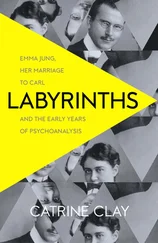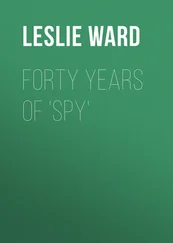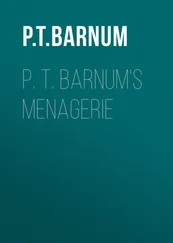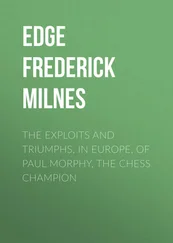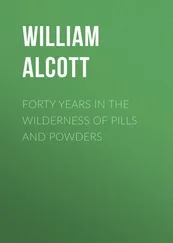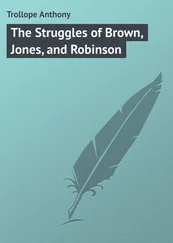Phineas Barnum - Struggles amd Triumphs - or, Forty Years' Recollections of P.T. Barnum
Здесь есть возможность читать онлайн «Phineas Barnum - Struggles amd Triumphs - or, Forty Years' Recollections of P.T. Barnum» — ознакомительный отрывок электронной книги совершенно бесплатно, а после прочтения отрывка купить полную версию. В некоторых случаях можно слушать аудио, скачать через торрент в формате fb2 и присутствует краткое содержание. Издательство: Иностранный паблик, Жанр: foreign_antique, foreign_prose, на английском языке. Описание произведения, (предисловие) а так же отзывы посетителей доступны на портале библиотеки ЛибКат.
- Название:Struggles amd Triumphs: or, Forty Years' Recollections of P.T. Barnum
- Автор:
- Издательство:Иностранный паблик
- Жанр:
- Год:неизвестен
- ISBN:нет данных
- Рейтинг книги:5 / 5. Голосов: 1
-
Избранное:Добавить в избранное
- Отзывы:
-
Ваша оценка:
- 100
- 1
- 2
- 3
- 4
- 5
Struggles amd Triumphs: or, Forty Years' Recollections of P.T. Barnum: краткое содержание, описание и аннотация
Предлагаем к чтению аннотацию, описание, краткое содержание или предисловие (зависит от того, что написал сам автор книги «Struggles amd Triumphs: or, Forty Years' Recollections of P.T. Barnum»). Если вы не нашли необходимую информацию о книге — напишите в комментариях, мы постараемся отыскать её.
Struggles amd Triumphs: or, Forty Years' Recollections of P.T. Barnum — читать онлайн ознакомительный отрывок
Ниже представлен текст книги, разбитый по страницам. Система сохранения места последней прочитанной страницы, позволяет с удобством читать онлайн бесплатно книгу «Struggles amd Triumphs: or, Forty Years' Recollections of P.T. Barnum», без необходимости каждый раз заново искать на чём Вы остановились. Поставьте закладку, и сможете в любой момент перейти на страницу, на которой закончили чтение.
Интервал:
Закладка:
Early in the following March, I received notice from some of the Irish population that they meant to visit me in great numbers on “St. Patrick’s day in the morning.” “All right,” said I to my carpenter, “get your egress ready for March 17”; and I added, to my assistant manager: “If there is much of a crowd, don’t let a single person pass out at the front, even if it were St. Patrick himself; put every man out through the egress in the rear.” The day came, and before noon we were caught in the same dilemma as we were on the Fourth of July; the Museum was jammed and the sale of tickets was stopped. I went to the egress and asked the sentinel how many hundreds had passed out?
“Hundreds,” he replied, “why only three persons have gone out by this way and they came back, saying that it was a mistake and begging to be let in again.”
“What does this mean?” I inquired; “surely thousands of people have been all over the Museum since they came in.”
“Certainly,” was the reply “but after they have gone from one saloon to another and have been on every floor, even to the roof, they come down and travel the same route over again.”
At this time I espied a tall Irish woman with two good-sized children whom I had happened to notice when they came in early in the morning.
“Step this way, madam,” said I politely, “you will never be able to get into the street by the front door without crushing these dear children. We have opened a large egress here and you can pass by these rear stairs into Ann Street and thus avoid all danger.”
“Sure,” replied the woman, indignantly, “an’ I’m not going out at all, at all, nor the children aither, for we’ve brought our dinners and we are going to stay all day.”
Further, investigation showed that pretty much all of my visitors had brought their dinners with the evident intention of literally “making a day of it.” No one expected to go home till night; the building was overcrowded, and meanwhile hundreds were waiting at the front entrance to get in when they could. In despair I sauntered upon the stage behind the scenes, biting my lips with vexation, when I happened to see the scene-painter at work and a happy thought struck me: “Here,” I exclaimed, “take a piece of canvas four feet square, and paint on it, as soon as you can, in large letters —
Seizing his brush he finished the sign in fifteen minutes, and I directed the carpenter to nail it over the door leading to the back stairs. He did so, and as the crowd, after making the entire tour of the establishment, came pouring down the main stairs from the third story, they stopped and looked at the new sign, while some of them read audibly: “To the Aigress.”
“The Aigress,” said others, “sure: that’s an animal we haven’t seen,” and the throng began to pour down the back stairs only to find that the “Aigress” was the elephant, and that the elephant was all out o’ doors, or so much of it as began with Ann Street. Meanwhile, I began to accommodate those who had long been waiting with their money at the Broadway entrance.
Notwithstanding my continual outlays for additional novelties and attractions, or rather I might say, because of these outlays, money poured in upon me so rapidly that I was sometimes actually embarrassed to devise means to carry out my original plan for laying out the entire profits of the first year in advertising. I meant to sow first and reap afterwards. I finally hit upon a plan which cost a large sum, and that was to prepare large oval oil paintings to be placed between the windows of the entire building, representing nearly every important animal known in zoology. These paintings were put on the building in a single night, and so complete a transformation in the appearance of an edifice is seldom witnessed. When the living stream rolled down Broadway the next morning and reached the Astor House corner, opposite the Museum, it seemed to meet with a sudden check. I never before saw so many open mouths and astonished eyes. Some people were puzzled to know what it all meant; some looked as if they thought it was an enchanted palace that had suddenly sprung up; others exclaimed, “Well, the animals all seem to have ‘broken out’ last night,” and hundreds came in to see how the establishment survived the sudden eruption. At all events, from that morning the Museum receipts took a jump forward of nearly a hundred dollars a day, and they never fell back again. Strangers would look at this great pictorial magazine and argue that an establishment with so many animals on the outside must have something on the inside, and in they would go to see. Inside, I took particular pains to please and astonish these strangers, and when they went back to the country, they carried plenty of pictorial bills and lithographs, which I always lavishly furnished, and thus the fame of Barnum’s Museum became so wide-spread, that people scarcely thought of visiting the city without going to my establishment.
In fact, the Museum had become an established institution in the land. Now and then some one would cry out “humbug” and “charlatan,” but so much the better for me. It helped to advertise me, and I was willing to bear the reputation – and I engaged queer curiosities, and even monstrosities, simply to add to the notoriety of the Museum.
Dr. Valentine will be remembered by many as a man who gave imitations and delineations of eccentric characters. He was quite a card at the Museum when I first purchased that establishment, and before I introduced dramatic representations into the “Lecture Room.” His representations were usually given as follows: A small table was placed in about the centre of the stage; a curtain reaching to the floor covered the front and two ends of the table; under this table, on little shelves and hooks, were placed caps, hats, coats, wigs, moustaches, curls, cravats, and shirt collars, and all sorts of gear for changing the appearance of the upper portion of the person. Dr. Valentine would seat himself in a chair behind the table, and addressing his audience, would state his intention to represent different peculiar characters, male and female, including the Yankee tin peddler; “Tabitha Twist,” a maiden lady; “Sam Slick, Jr.,” the precocious author; “Solomon Jenkins,” a crusty old bachelor, with a song; the down-east school-teacher with his refractory pupils, with many other characters; and he simply asked the indulgence of the audience for a few seconds between each imitation, to enable him to stoop down behind the table and “dress” each character appropriately.
The Doctor himself was a most eccentric character. He was very nervous, and was always fretting lest his audience should be composed of persons who would not appreciate his “imitations.” During one of his engagements the Lecture Room performances consisted of negro minstrelsy and Dr. Valentine’s imitations. As the minstrels gave the entire first half of the entertainment, the Doctor would post himself at the entrance to the Museum to study the character of the visitors from their appearance. He fancied that he was a great reader of character in this way, and as most of my visitors were from the country, the Doctor, after closely perusing their faces, would decide that they were not the kind of persons who would appreciate his efforts, and this made him extremely nervous. When this idea was once in his head, it took complete possession of the poor Doctor, and worked him up into a nervous excitement which it was often painful to behold. Every country-looking face was a dagger to the Doctor, for he had a perfect horror of exhibiting to an unappreciative audience. When so much excited that he could stand at the door no longer, the disgusted Doctor would come into my office and pour out his lamentations in this wise:
Читать дальшеИнтервал:
Закладка:
Похожие книги на «Struggles amd Triumphs: or, Forty Years' Recollections of P.T. Barnum»
Представляем Вашему вниманию похожие книги на «Struggles amd Triumphs: or, Forty Years' Recollections of P.T. Barnum» списком для выбора. Мы отобрали схожую по названию и смыслу литературу в надежде предоставить читателям больше вариантов отыскать новые, интересные, ещё непрочитанные произведения.
Обсуждение, отзывы о книге «Struggles amd Triumphs: or, Forty Years' Recollections of P.T. Barnum» и просто собственные мнения читателей. Оставьте ваши комментарии, напишите, что Вы думаете о произведении, его смысле или главных героях. Укажите что конкретно понравилось, а что нет, и почему Вы так считаете.



